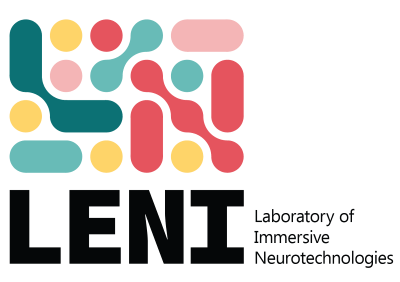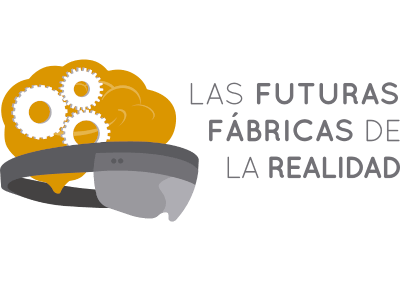Persuasive and Immersive Learning
Technologies for enhancing human abilities and capacities.
Persuasive and Immersive Learning
Persuasive and immersive learning refers to the integration of persuasive design principles and immersive technologies to create engaging and effective learning experiences. This approach leverages techniques from persuasive communication, behavioral psychology, and immersive technologies such as virtual reality (VR), augmented reality (AR), and gamification to motivate learners, enhance retention, and facilitate behavior change.
The adaptation of this type of methodology to real life is highly effective in the study of the learning process, since it not only allows it to be improved, but also understands how the subject learns through the use of collecting implicit psychophysiological signals during the learning process. process. Virtual reality offers you a great opportunity to measure this process and through iterations improve it. This area of research is focused on the study not only of the learning process but also on how valuable learning occurs mediated by technology.
Within this area of research there are certain points of great interest, always taking into account that the measurement, evaluation and improvement of processes, both in the clinic and in teaching and organizations, is our priority, since it is a Practical perspective of application of neuropsychological assessment and monitoring techniques.
Areas
Collaborative Teams Optimization
Collaborative teams optimization refers to the process of enhancing the effectiveness, efficiency, and overall performance of teams working together towards common goals. It involves leveraging the collective skills, knowledge, and resources of team members to achieve optimal outcomes. This optimization may encompass various aspects such as improving communication, fostering trust and cooperation, clarifying roles and responsibilities, aligning goals, leveraging diverse perspectives, implementing efficient workflows and processes, and utilizing appropriate tools and technologies. Ultimately, the aim of collaborative teams optimization is to maximize productivity, innovation, and success while minimizing conflicts, inefficiencies, and barriers to collaboration.
Among the pioneering approaches in ITAP is Virtual Reality Exposure Therapy (VRET). VRET utilizes virtual reality techniques to augment exposure treatments in psychotherapy, serving as a highly effective intermediary step between the controlled environment of the therapist’s office and the unpredictable nature of the real world.
Generative XR for Psychological Interventions
Generative XR for psychological interventions refers to the use of Extended Reality (XR) technologies such as Virtual Reality (VR), Augmented Reality (AR), and Mixed Reality (MR) to create immersive, interactive, and customizable experiences aimed at supporting mental health and well-being.
The term “generative” suggests that these experiences are not just static or pre-defined, but rather dynamically adapt and respond to the user’s input, preferences, and therapeutic needs. This adaptability allows for personalized interventions tailored to individuals’ specific psychological profiles, symptoms, and therapeutic goals.
Creation of Virtual Criminals to assessment policial comunication skills
The creation of virtual criminals for assessing police communication skills involves utilizing virtual reality (VR) or similar immersive technologies to simulate realistic scenarios where law enforcement officers interact with virtual characters representing criminals or suspects. These simulations can provide a safe and controlled environment for officers to practice and enhance their communication skills, de-escalation techniques, and decision-making abilities in various law enforcement situations.
Overall, the creation of virtual criminals for assessing police communication skills represents an innovative approach to enhancing law enforcement training and promoting safer, more effective interactions between officers and the communities they serve.
Technology-Enhanced Learning models
Technology-enhanced learning (TEL) models refer to various frameworks and approaches that integrate technology into the teaching and learning process to enhance educational outcomes. These models leverage digital tools, multimedia resources, online platforms, and interactive technologies to facilitate engagement, collaboration, and personalized learning experiences.
These technology-enhanced learning models offer diverse opportunities to improve teaching effectiveness, enhance student engagement, and promote deeper learning experiences across various educational contexts and disciplines.
In our laboratory, we propose the use of new technologies to analyze the direct responses of students to different content mediated by technologies. The use of these metrics will help to understand the neuropsychological responses to diverse content, with different technologies, while analyzing the complete process.
Assessment of Psychological Traits
Assessing psychological traits involves using various methods and tools to measure and evaluate individuals’ characteristics, behaviors, attitudes, and emotions. These assessments are essential for understanding personality, cognitive abilities, emotional intelligence, and other aspects of psychological functioning.
Assessing psychological traits requires careful consideration of the validity, reliability, and ethical implications of the chosen assessment methods. Integrating multiple assessment approaches and sources of information can enhance the accuracy and comprehensiveness of psychological evaluations. Additionally, it is essential to interpret assessment results within the context of individuals’ cultural backgrounds, personal experiences, and situational factors.
Organizational Neuroscience
Organizational neuroscience, also known as organizational cognitive neuroscience or neuroleadership, is an interdisciplinary field that combines principles from neuroscience, psychology, and organizational behavior to study how brain processes influence individual and group behavior within organizational contexts. This emerging field aims to understand the neural mechanisms underlying various organizational phenomena, such as decision-making, leadership, communication, teamwork, and employee well-being.
Overall, organizational neuroscience offers a multidisciplinary approach to understanding human behavior and organizational dynamics, integrating insights from neuroscience with theories and practices from organizational psychology and management. By elucidating the neural basis of organizational phenomena, this field aims to inform evidence-based strategies for improving leadership effectiveness, decision-making processes, employee engagement, and organizational performance.











